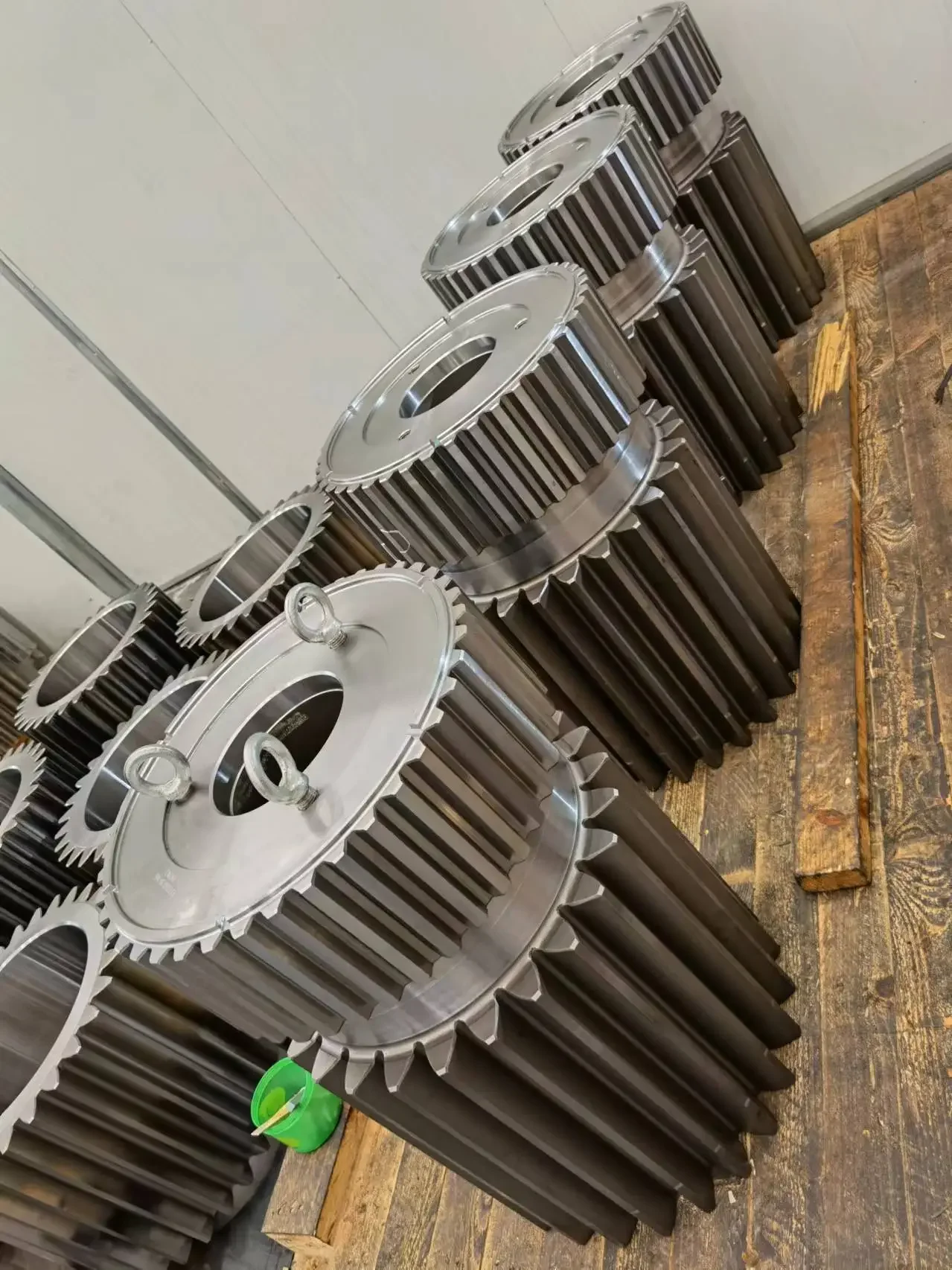- This topic is empty.
-
AuthorPosts
-
02/04/2025 at 15:04 #3554
Wind energy has emerged as one of the most sustainable and rapidly advancing renewable energy sources worldwide. As wind turbines increase in size and power output, the demand for efficient and robust drivetrain components has grown significantly. One of the critical elements in modern wind turbine design is the gearbox, specifically the planetary gear system. High-load planetary gear systems offer several advantages in handling the increasing power and torque requirements of large wind turbines. In this blog post, Longruifa, a high precision industrial gear manufacturer, will share the application advantages of high load wind turbine planetary gear for sale and discuss their role in improving efficiency, reliability, and overall performance.
Understanding Planetary Gear Systems in Wind Turbine
A planetary gearbox consists of a central sun gear, multiple planet gears, a ring gear, and a carrier that holds the planet gears. This design enables efficient power transmission while distributing loads across multiple contact points, reducing stress and increasing durability. In wind turbines, planetary gears are commonly used in multi-stage configurations to achieve the necessary speed increase from the slow-rotating main shaft to the high-speed generator shaft.
High Load Wind Turbine Planetary Gear Application Advantages
1. Enhanced Load Distribution and Durability
One of the primary benefits of planetary gear systems in high-load applications is their ability to distribute torque across multiple gears. Unlike traditional parallel shaft gearboxes, planetary gears distribute the load among several planet gears, reducing the stress on individual gear teeth. This results in improved durability and longer service life, which is crucial for wind turbines operating in harsh environmental conditions.
2. High Power Density and Compact Design
High-load planetary gear systems offer an exceptional power-to-weight ratio. Their compact design allows for higher torque transmission within a smaller volume, making them ideal for wind turbine nacelles where space constraints are a significant consideration. The ability to deliver high power density while maintaining a lightweight structure helps in reducing overall turbine weight and improving mechanical efficiency.
3. Improved Torque Handling Capacity
Large-scale wind turbines experience substantial variations in torque due to fluctuating wind speeds and grid interactions. High-load planetary gears are designed to withstand these variations effectively. The multi-gear engagement mechanism ensures that torque is transmitted smoothly, minimizing mechanical shocks and vibrations that could otherwise lead to premature wear and failure.

4. Increased Efficiency and Reduced Energy Loss
The efficiency of a wind turbine drivetrain is critical in maximizing energy output. Planetary gear systems have inherently high efficiency due to their multiple contact points and rolling motion. This reduces frictional losses compared to traditional gear systems, leading to improved overall energy conversion efficiency. Additionally, advanced lubrication techniques and optimized gear materials further enhance efficiency and reduce energy losses due to heat and friction.
5. Superior Load Carrying Capacity in Extreme Conditions
Wind turbines often operate in extreme environmental conditions, including high winds, temperature variations, and exposure to dust and moisture. High-load planetary gear systems are engineered to withstand these conditions with high-strength materials, specialized coatings, and robust sealing mechanisms. This ensures prolonged operation with minimal maintenance, reducing downtime and operational costs.
6. Lower Maintenance and Longer Service Intervals
Wind turbines are typically installed in remote locations, making maintenance challenging and costly. The durability and reliability of high-load planetary gear systems contribute to extended service intervals and reduced maintenance requirements. Features such as improved bearing designs, advanced lubrication systems, and real-time condition monitoring help in predictive maintenance, preventing unexpected failures and optimizing operational efficiency.
7. Scalability for Large Wind Turbines
As the wind energy industry moves toward larger turbines with capacities exceeding 10 MW, drivetrain components must scale accordingly. High-load planetary gear systems are well-suited for this trend due to their modular and scalable nature. By integrating additional gear stages or optimizing gear geometry, manufacturers can tailor planetary gear systems to meet the specific power and torque demands of next-generation wind turbines.
8. Noise and Vibration Reduction
Noise and vibrations are critical concerns in wind turbine operation, as they impact both structural integrity and environmental compliance. The design of planetary gear systems inherently reduces noise and vibrations due to the balanced distribution of forces and smoother gear engagement. Advanced damping techniques and precision manufacturing further contribute to quieter operation, enhancing overall system reliability.
Conclusion
High-load planetary gear systems play a pivotal role in advancing wind turbine technology by offering enhanced durability, efficiency, and scalability. Their ability to handle extreme loads, optimize power transmission, and reduce maintenance requirements makes them an essential component in modern wind energy systems. As wind turbines continue to grow in size and capacity, the adoption of high-load planetary gear technology will remain a cornerstone in ensuring reliable and cost-effective wind power generation. By leveraging these advantages, wind energy stakeholders can maximize energy output, reduce operational costs, and contribute to the global transition toward sustainable energy solutions.
http://www.lrfgears.com
Longruifa -
AuthorPosts
- You must be logged in to reply to this topic.